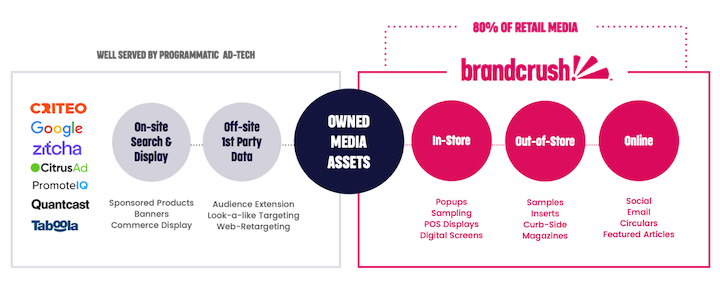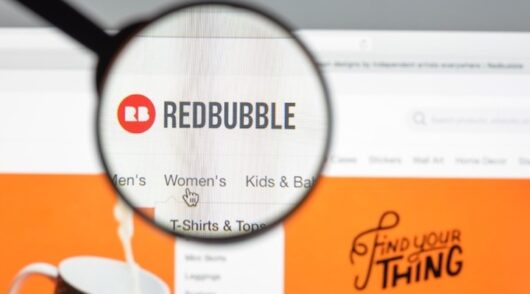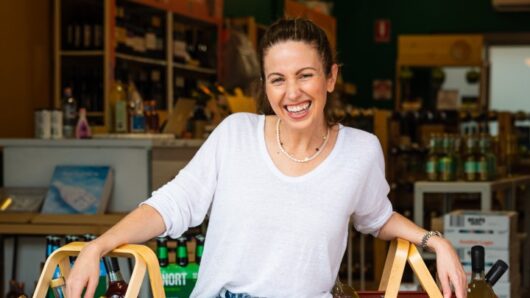In an era when more and more consumers are actively shopping across multiple channels, retailers across Australia are leaving millions of dollars of potential income on the table by not pursuing an omnichannel media management solution.
Matt Hurle, co-founder of omnichannel retail media booking and planning software company Brandcrush, (pictured above), says Australian retailers are beginning to understand that 80 per cent of retail media assets are in-store and offline. And the FMCG brands whose products are sold in those stores understand that 70 per cent of purchase decisions are made in-store.
Data like that is driving a trend away from generic mass media advertising to mediums much closer to the point of purchase.
Owned media takes many forms, including aisle-end displays, shelf-talkers, chiller decals, digital screens, floor decals, catalogues, in-store radio networks, product sampling and promotional pop ups. Outside stores, retailers have social media channels, like Facebook, TikTok and Instagram, and their own website. Hurle says retailers need a turnkey media management solution that connects both programmatic and instore assets through a centralised single sign-on platform for suppliers.

In Australia, Coles and Woolworths have built their retail media assets into a business worth almost a billion dollars. Metcash, now recognising the opportunity, anticipating media potential worth more than $100 million by 2024. The pandemic may have accelerated online sales adoption but in-store sales still account for more than 50 per cent of sales across all retail categories, with grocery still sitting higher at upwards of 80 per cent of a shopper’s journey.
“When talking to retailers in Australia, many of them aren’t monetising their assets,” explains Hurle. “They’re giving valuable inventory away to their suppliers and are yet to unlock their media revenue. With upwards of 80 per cent of shoppers buying in-store, in-store media is absolutely key to any retailer-owned media strategy.”
Brandcrush has invested heavily in developing proprietary software that provides retailers with a self-serve media portal, where suppliers can plan, book and measure the results of campaigns. It now has more than 1500 brands and agencies on the platform and more than 1000 media owners across Australia, New Zealand, the UK, the US and Canada.
The company’s mission, says Hurle, is to unlock the media potential of all businesses, replacing endless streams of emails between multiple brands, retailers and stores and the spreadsheets traditionally relied on to manage bookings.
“If there’s no way for marketers – big brands, media agencies – to easily discover and buy those opportunities, then they just don’t. They end up spending that money with Google or Facebook or somewhere else. Having a systemised platform where brands can seamlessly purchase this media on a self-serve basis, as well as buyers being able to easily manage negotiated proposals with brands, that’s a major hurdle that retailers need to overcome if they are going to elevate their retail media game,” says Hurle.
“Traditionally, brands secure in-store media and merchandising assets directly with retail buyers during range review periods to support product sell-through,” he says.
“These media partnerships are then managed via email which is often very clunky: someone needs to be briefed in marketing, then someone in operations, then the finance people need to know they need to bill these the brand. Brandcrush streamlines this whole process across multiple stakeholders – the buyers, the operations team, the finance team, the marketing team – so they can truly scale the selling and monetisation of that in-store media.”
Where the platform removes the complexity in the current offline process of media bookings, it also unlocks the media sales potential in the long tail of brands that currently are not transacting with retailers.
Brandcrush’s current focus is on mid to larger bricks and mortar retailers, D2C retailers and shopping centre groups. However, the omnichannel media platform has applications across multiple verticals that have valuable customer touchpoints – from fitness operators to hospitality locations and universities.
“With today’s omnichannel shoppers, the true future of retail media is a 360-degree solution that manages in-store, offline and online through the one platform” adds Hurle.
“The biggest share of retail sales come from in-store, and therefore retailers need to prioritise systems that solve for the omnichannel media opportunity”.






